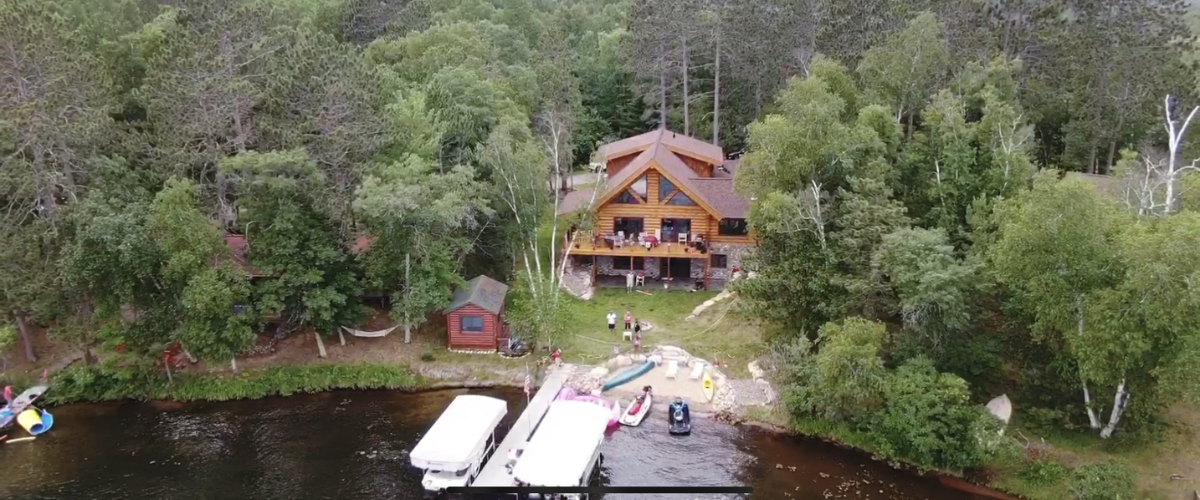
Building a Log Cabin: A Comprehensive Guide to Your Rustic Retreat
Dreaming of a cozy retreat in the heart of nature? Building a log cabin allows you to immerse yourself in rustic charm while enjoying the comforts of a home away from home. Whether it's a weekend getaway or a full-time residence, constructing a log cabin requires careful planning, knowledge of construction techniques, and a passion for craftsmanship. In this comprehensive guide, we will delve into the step-by-step process of building a log cabin. From choosing the ideal location and selecting suitable logs to mastering construction techniques and creating a warm interior, we will provide valuable insights and practical tips to help you embark on your log cabin construction journey.
1. Recommended Website To Gather Information:
We highly recommend visiting Log Cabin Hub to start you research on building a log cabin. Log Cabin Hub offers great resources for building a log cabin such as:
- Log Cabin Plans
- How To Build A Log Cabin
- Cabin Kits
- Construction Techniques and Notching
- Planning and Designing Cabins
Log Cabin Hub is your one stop information center for all things log cabin related and is aimed towards educating cabin builders, homesteaders, lumberjacks, and anyone interested in log cabins. For more information, visit www.logcabinhub.com.
Are you struggling on where to start? Lob Cabin Hub's Blog page is a great place to start sourcing ideas.
Log Cabin Hub has been featured in:
2. Selecting the Perfect Location:Considerations for Location: Start by evaluating potential locations based on factors such as accessibility, natural surroundings, climate, and proximity to amenities. Consider your needs and preferences—whether it's a mountain view, a lakeside escape, or a forest hideaway.
Researching Zoning and Building Regulations: Familiarize yourself with local zoning and building regulations to ensure compliance with legal requirements. Contact local authorities to obtain necessary permits and understand any restrictions that may affect the construction of your log cabin.
Log Selection: Choose logs that are straight, strong, and properly dried. Opt for locally sourced logs to maintain authenticity and reduce transportation costs. Consider the log species, diameter, and length based on your desired cabin size and design.
Log Preparation: Prepare logs by removing bark and allowing them to dry further if necessary. Consider treating the logs to protect against insects, rot, and decay. Properly prepared logs ensure longevity and structural integrity.
Foundation: Begin with a solid foundation that can support the weight of the log cabin. Common options include concrete slabs, piers, or crawl spaces. Consult with professionals to determine the most suitable foundation for your specific location and soil conditions.
Log Cabin Construction Methods: Explore different log cabin construction methods, such as the Scandinavian Full-Scribe, Post-and-Beam, or Timber Frame techniques. Each method has its own advantages and aesthetic appeal. Choose the method that aligns with your vision and skill level.
Scribing and Joinery: Scribing is the process of precisely fitting logs together. Learn scribing techniques to create tight-fitting joints that ensure structural stability and weather resistance. Master the art of notching, dovetailing, and chinking to achieve a seamless and sturdy log cabin.
Roofing and Insulation: Install a suitable roofing system, such as metal, shingles, or cedar shakes, to protect your log cabin from the elements. Consider insulation options to ensure energy efficiency and year-round comfort.
Floor Plan and Layout: Plan your log cabin's interior to maximize space and functionality. Consider factors such as room placement, natural light, and views. Create an open-concept design or divide rooms for specific purposes, ensuring a cozy and efficient layout.
Interior Finishes: Choose finishes that complement the rustic charm of your log cabin. Opt for natural materials like wood, stone, and textiles to maintain a warm and inviting atmosphere. Incorporate features like a stone fireplace, exposed beams, and large windows to enhance the cabin's charm. Once these features are in place, you can start decorating with cabin lighting and cabin area rugs.

Leave a comment